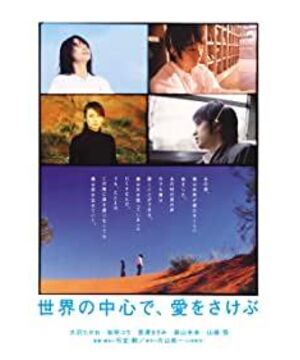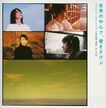But such an old-fashioned story can still get a good tearjerker effect. The reasons may include that, on the one hand, the tragic paradigm of "ripping up beautiful things for others to see" will always have a market; But I think the more important reason is that Director Xing Dingxun made a very standard movie, and these standard audio-visual elements really worked.
The tearjerking effect of this tragic story comes from contrasting harsh reality with fond memories. In order to do this, the director strictly distinguishes between reality and memory in terms of color and light. In real time and space, from the beginning of the film to the end of the film, before going to Australia, the outdoor scenes are all rainy weather, the indoor scenes are almost always in the dark, the lighting is obviously bluish, and the color of the scenery is mainly blue-gray, all of which are cool tones. In the time and space of memory, before Yaji lost his hair due to leukemia, the light was either the reddish-yellow sunlight at dusk or the yellow light of a desk lamp, both of which were warm colors. Most of the light sources are point light sources (table lamps, sun) or surface light sources (windows), and diffuse light is used less. The lighting angle uses a lot of side light and backlight, which looks layered, and the atmosphere is warm, romantic, and even dreamy. There is only the scene in the hut on the island during the summer vacation. When Aki wrote the names of the two people on the window glass of the hut, because the light was dimmed away from the fire, the two were shrouded in shadows one after another. An ominous omen foretells the sudden fall of Yaji on the top of the reef. After Aki's hair fell out, whether in the hospital or the airport, the tones in the space and time of memory began to turn cold. The most obvious is the scene where Sakutaro took his marriage certificate to the hospital to visit Aki. It was still the light coming in from the window, and the angle was backlit, similar to the lighting conditions in the classroom and other scenes before, but because the light passed through the ICU. The glass refracts, and it becomes a lot paler. Until the scene in Australia at the end of the film, the unique red soil made the main color of the film return to warm colors. At this time, Sakutaro fulfilled his promise to Aki, accepted the reality of Aki's death, and was ready to start a new life. The lighting, color and other modeling elements are strictly consistent with the narrative motives, successfully rendering the overall tragic atmosphere of the film.
The tapes in the film are an important item for eliciting memories, so the audio clips that run through almost the entire film are also important. These recording fragments, as sound elements, have both formal and ideographic functions. The function in form is mainly transition. Whenever the film transitions between reality and memory, the continuous playback of the audio clips and the spatial consistency (that is, Sakutaro's return to the old place) together become the connecting point of the transition. The ideographic function is mainly manifested in the relationship between sound and picture. Sometimes the recording clips are just voiceovers. Sometimes Sakutaro on the screen is listening to the tape, and the recorded clips we hear seem to be synchronized with the screen, but in fact, because Sakutaro is wearing headphones, there should be no sound at all, so the relationship between sound and picture at this time is still a counterpoint relationship. . The counterpoint relationship between the recording and the picture is always maintained, that is to say, there is a distance between the sound and the picture, thus creating a psychological space-time free between reality and memory. This psychological space-time combines reality and memory. Unified and highly subjective, it makes it easier for the audience's mood to follow the mood swings in the recording and into the atmosphere that the director wants to render.
The counterpoint relationship between sound and picture exists not only when playing the recording clip, but also in other scenes. For example, the scene between Sakutaro and Aki at the airport. The first shot is a big panorama. According to such a spatial relationship, we should not have heard the conversation between Sakutaro and Aki clearly in the noisy airport terminal. But at this time the voices of other people in the film were very small, only the voices of Sakutaro and Aki were very clear. This is not an objective environmental sound effect, but a psychological sound effect, which shows that Sakutaro and Aki only have each other in their hearts at this moment, and the noise of others is irrelevant and can no longer be heard. In the scene where Sakutaro met a funeral procession on the road after Aki was admitted to the hospital, the funeral procession was originally noisy, but in the film these noises became smaller and smaller, and lyrical music sounded at the same time. At this time, all the shots with Sakutaro are telephoto lenses, only Sakutaro is clear, and the funeral procession in the background is blurred. The effect of these sounds and pictures shows that Sakutaro is estranged from the noisy funeral procession around him, and shows that he is unwilling to accept the fact that Aki will also die soon.
As a type of film, romance films have some very fixed routines. We watch the same stories over and over again, but each time there is a certain thrill. This tells us that for genre films, although the story is old-fashioned, as long as you study the rules of the genre carefully and make a standard movie honestly, it is not a matter of getting good results and earning the audience's tears or laughter. Very difficult.
View more about Crying Out Love in the Center of the World reviews











